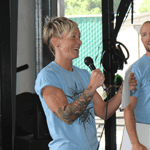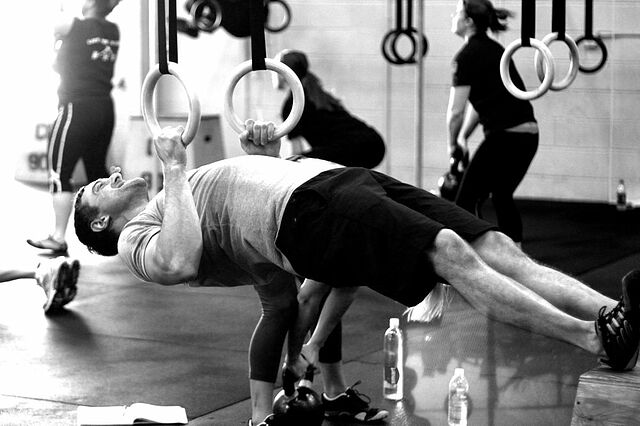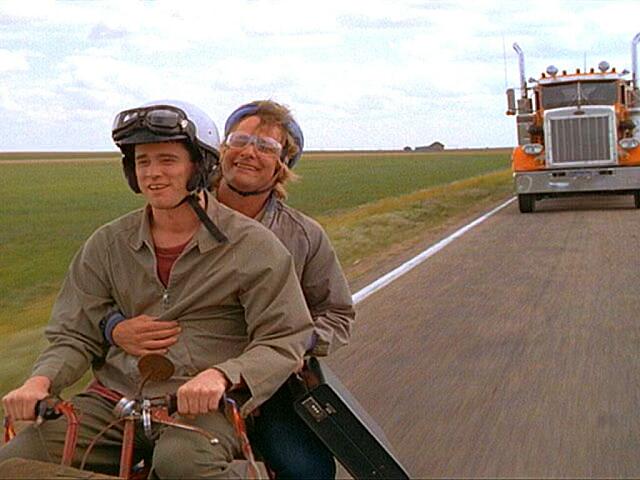Movement Progressions: A Better Way To Overcome Training Plateaus
Speed & Agility | Sports PerformanceABOUT THE AUTHOR

Sarah Strange
Sarah is a Strength and Conditioning coach at NorCal Strength and Conditioning. She approaches fitness with a love of learning new things and keeping life interesting. She remains committed to helping people along their journey to be healthier, stronger, and happier than they were yesterday.
If you’ve ever coached CrossFit, you’re familiar with the concept of “scaling”, a term used to describe easier or assisted versions of an exercise.
Scaling is great because it allows you to run one class to suit all fitness levels, with everyone doing some version of the same exercise. This makes programming and scheduling for a gym that much easier, and it seems to give beginners confidence that they can get through the same workout as the advanced athletes.
Sounds great, right? Wrong!

Having used scaled exercises for years in our gym, we have seen that it can lead to plateaus with slower progress out of the scaled version, along with some bad habits and more frequent injuries.
With lots of frustration, and trial and error, we decided to rely less on scaled exercises in favor of exercise progression.
// Movement Progression vs. Movement Scaling
“Progression” means finding unmodified exercises that the person can perform with perfect technique and fully achieve the intended position with minimal assistance (or no assistance). Perfect technique means moving without any compensations to mask poor mobility or insufficient strength.
Finding the appropriate progression will better train skilled movement and address mobility deficits while building strength and technical proficiency with less chance of injury.
Once they have mastered the exercise, we move them along the chain to a more advanced exercise, and so it goes until they have achieved relative Beastmode status.
// A Common Example Of Scaling Gone Bad

The classic scaled version of the pull-up is the banded pull-up. This refers to using a thick rubber assistance band, typically wrapped around the pull-up bar and placed under the feet to help the person get a few pull-ups.
Now I could write a whole post on what’s wrong with banded pull-ups, but fortunately I don’t have to because it’s already been done.
We don’t believe banded pull-ups are the enemy, and we still program them in our facility, but training them exclusively to get a pull-up is like driving through Florida to get to California from New York… and then trading your car in for a “fixie” right before you hit the Rockies.
What you should understand about the banded pull-up is that the assistance band screws the pooch by providing too much assistance at the bottom or start of the pull-up.
If you never find a way to develop this strength, you will be doomed to dwell in Bandland for a long, long time, despite all your hard work.
// The NorCal Upper Body Pulling Progression
What follows are the upper body pulling progressions we use in our facility. We generally recommend being able to accomplish 3 unbroken sets of the established reps before moving on to the next exercise.
In general, having the capacity to do one exercise progression precedes the next. We have clients start at the beginning of horizontal and vertical pulling, working their way up to Bulgarian rows and pull-ups. Some can be trained in tandem to round out training, so long as they can both be done without compensation, and in most cases, without assistance:
Horizontal Pulling Progression
10 Ring Rows (beginner)
10 Hinge Rows (intermediate)
6 Bulgarian Rows (intermediate)
Despite not being on the list, it’s equally important to incorporate additional pulling exercises like dumbbell or barbell rows to develop strength, and various stretching and active range strength training exercises to improve working position and shoulder girdle mobility.
Vertical Pulling
Full flexion test at wall (beginner)
30 second Static Hang (beginner/ intermediate)
30 second Chin-over-bar Hold (beginner/ intermediate)
Pull-ups (advanced)
Chin-ups (advanced)
// How to Implement Progressions with Your Clients
Not only have we found it more effective to use progressions over scaled exercises, we feel that it better serves our clients to have separate classes for each fitness level, because not only should the exercise selection differ at each level, each training template should be different.
Before targeting 1-rep max strength in a more narrow and focused training block, beginners need to lay the important groundwork to develop connective tissue, general athleticism and useable range of motion.
In other words, gain the capacity for the movement before loading the movement.
A beginner training template should include more active range training, more coupled mobility to improve working positions, and more exercise variety to build movement skills, well rounded strength, and proprioceptive ability. This is where exercise progressions fit in more smoothly, rather than trying to guide beginners through scaled versions of advanced exercises.
“Coupled mobility” is a term used to describe a mobility exercise used in tandem with a strength training exercise to improve the working position, by selectively choosing an exercise that doesn’t beat up on the working muscles too much during working strength sets.
As they progress on to intermediate, movements of greater technical complexity are introduced onto a solid foundation of movement, but exercise progressions stays within the do-ability curve so that they can continue to work hard.
The beauty of progressions from a coaching standpoint, is that less of your clients get injured, less of your clients plateau, and less of your clients wind up in the category of people that make you nervous before, during, and after the workout.
The simplicity of utilizing an exercise progression chart, “achieve A before moving on to B”, is in theory a bulletproof system. In all honesty, it’s hard to transition a gym and change your class structure if you’ve only been using scaled exercises this whole time.
// Closing
It’s been a long term process and challenge for us to figure out a progression system that suits our facility and to find a really delicate but confident way to explain the positive shift so that our members can train harder, safer and smarter. It may be a tough sell to your clients or facility, it may be a little bit awkward, but in the end, the results are worth the effort.
Are you a better coach after reading this?
More coaches and athletes than ever are reading the TrainHeroic blog, and it’s our mission to support them with useful training & coaching content. If you found this article useful, please take a momemnt to share it on social media, engage with the author, and link to this article on your own blog or any forums you post in.
Be Your Best,
TrainHeroic Content Team
HEROIC SOCIAL
HEROIC SOCIAL
TRAINING LAB
Access the latest articles, reviews, and case studies from the top strength and conditioning minds in the TH Training Lab

